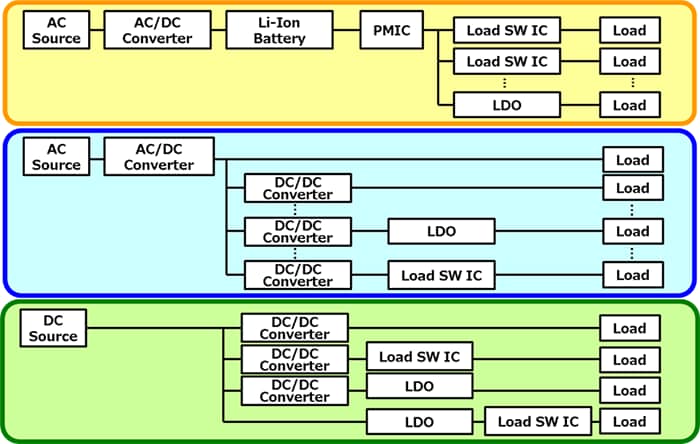Functions of Load Switch IC
Download "Chapter IV : Local Power Supply ICs" (PDF:770KB)
(1)Under voltage lock out (UVLO)
This function places the IC in the standby state when the input voltage drops below the specified input voltage so that the internal circuit becomes unstable, and malfunction does not occur.
(2)Thermal shut down (TSD)
It is a circuit to prevent deterioration and destruction of the device because of remarkable ambient temperature rise, heat generation of the device itself due to unintentional high current load etc. When the specified temperature is detected by the internal temperature detection circuit, the output transistor is turned off.
(3)True reverse current blocking
When input voltage VIN becomes higher than output voltage VOUT, current flows back from VOUT pin to VIN pin. Thction prevents reverse flow and protects the power supply etc. connected to the VIN terminal from deterioration and destruction.
(4)Over current limit
When the output terminal VOUT becomes unintentionally shorted, it protects against deterioration and destruction due to the heat generation of the device itself.
(5)Slew rate control driver
This circuit suppresses inrush current generated during switching transient.
(6)Output discharge
In a general load switch circuit, when the output transistor is turned off, the terminal voltage of VOUT may remain for a certain time depending on the load capacitance connected to the output terminal. This circuit rapidly discharges the charge accumulated on the load side and drops the VOUT terminal voltage to near the IC GND.

- Before
- 9/9
Related information
- Products
- Application Notes
- FAQ









